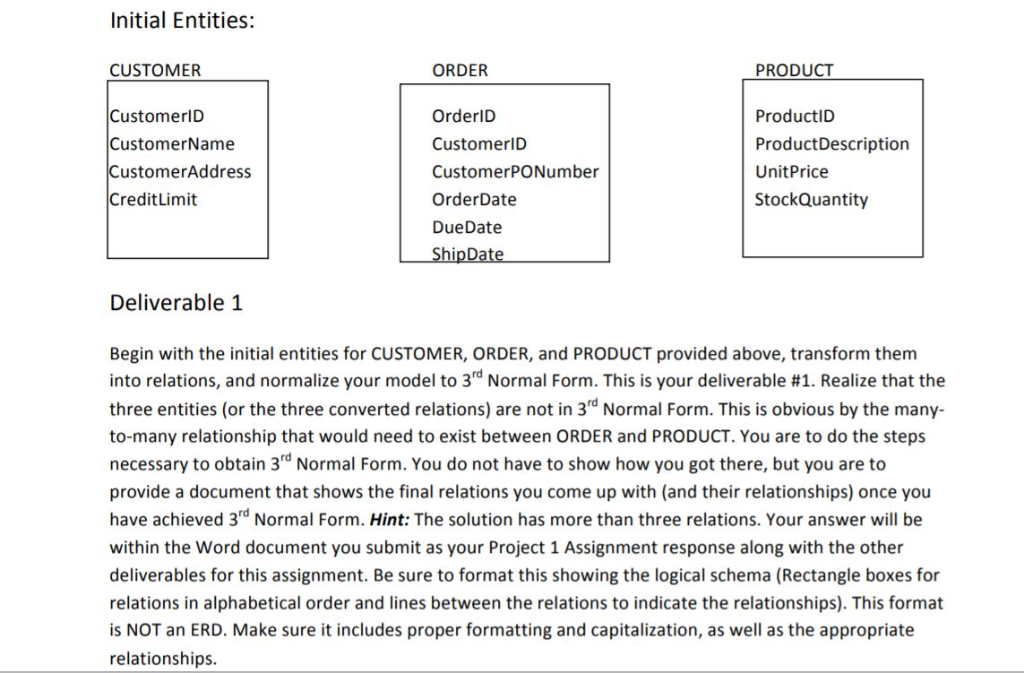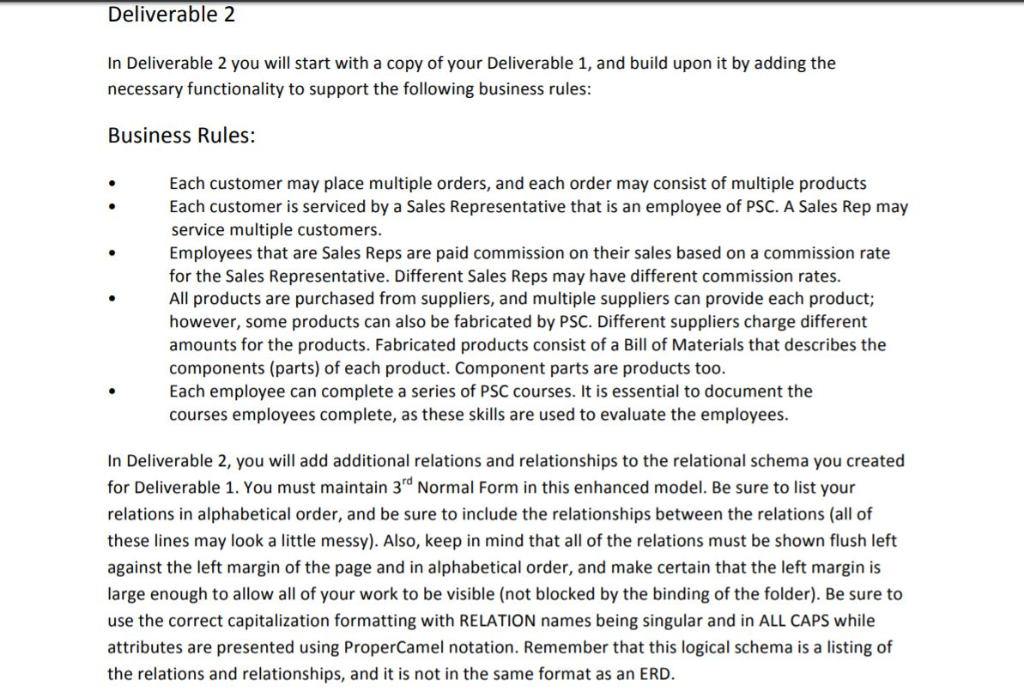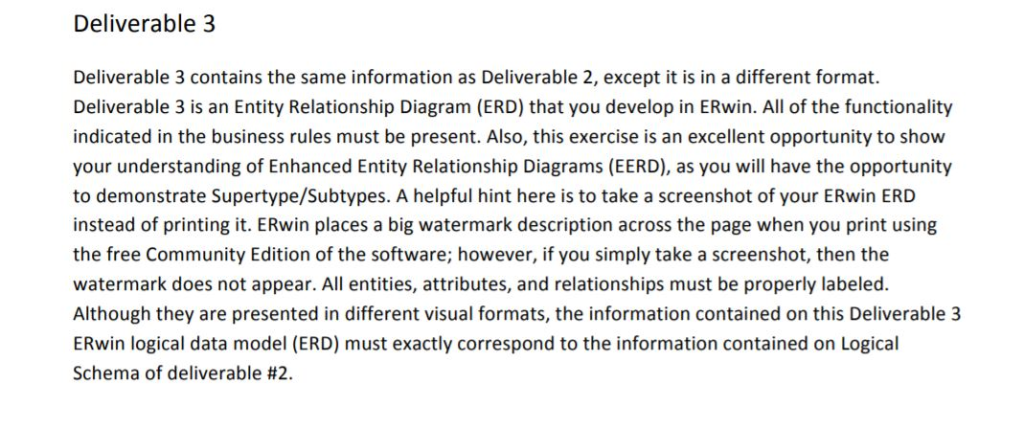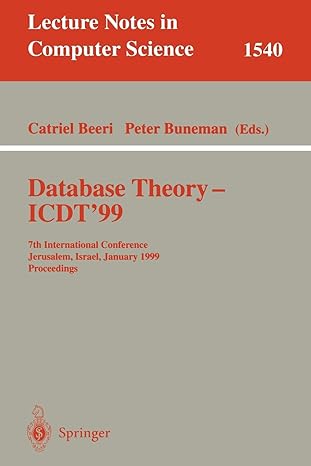Can anyone help me with deliverable 2 and 3 please?


Initial Entities: CUSTOMER ORDER PRODUCT OrderID CustomerlD CustomerPONumber OrderDate DueDate CustomerlD CustomerName ProductID ProductDescription UnitPrice StockQuantity ustomerAddress CreditLimit Deliverable 1 Begin with the initial entities for CUSTOMER, ORDER, and PRODUCT provided above, transform them into relations, and normalize your model to 3rd Normal Form. This is your deliverable #1. Realize that the three entities (or the three converted relations) are not in 3rd Normal Form. This is obvious by the many- to-many relationship that would need to exist between ORDER and PRODUCT. You are to do the steps necessary to obtain 3rd Normal Form. You do not have to show how you got there, but you are to provide a document that shows the final relations you come up with (and their relationships) once you have achieved 3rd Normal Form. Hint: The solution has more than three relations. Your answer will be within the Word document you submit as your Project 1 Assignment response along with the other deliverables for this assignment. Be sure to format this showing the logical schema (Rectangle boxes for relations in alphabetical order and lines between the relations to indicate the relationships). This format is NOT an ERD. Make sure it includes proper formatting and capitalization, as well as the appropriate relationships Deliverable 2 In Deliverable 2 you will start with a copy of your Deliverable 1, and build upon it by adding the necessary functionality to support the following business rules: Business Rules: Each customer may place multiple orders, and each order may consist of multiple products Each customer is serviced by a Sales Representative that is an employee of PSC. A Sales Rep may service multiple customers Employees that are Sales Reps are paid commission on their sales based on a commission rate for the Sales Representative. Different Sales Reps may have different commission rates. All products are purchased from suppliers, and multiple suppliers can provide each product; however, some products can also be fabricated by PSC. Different suppliers charge different amounts for the products. Fabricated products consist of a Bill of Materials that describes the components (parts) of each product. Component parts are products too. Each employee can complete a series of PSC courses. It is essential to document the courses employees complete, as these skills are used to evaluate the employees In Deliverable 2, you will add additional relations and relationships to the relational schema you created for Deliverable 1. You must maintain 3rd Normal Form in this enhanced model. Be sure to list your relations in alphabetical order, and be sure to include the relationships between the relations (all of these lines may look a little messy). Also, keep in mind that all of the relations must be shown flush left against the left margin of the page and in alphabetical order, and make certain that the left margin is large enough to allow all of your work to be visible (not blocked by the binding of the folder). Be sure to use the correct capitalization formatting with RELATION names being singular and in ALL CAPS while attributes are presented using ProperCamel notation. Remember that this logical schema is a listing of the relations and relationships, and it is not in the same format as an ERD Deliverable3 Deliverable 3 contains the same information as Deliverable 2, except it is in a different format. Deliverable 3 is an Entity Relationship Diagram (ERD) that you develop in ERwin. All of the functionality indicated in the business rules must be present. Also, this exercise is an excellent opportunity to show your understanding of Enhanced Entity Relationship Diagrams (EERD) as you will have the opportunity to demonstrate Supertype/Subtypes. A helpful hint here is to take a screenshot of your ERwin ERD instead of printing it. ERwin places a big watermark description across the page when you print using the free Community Edition of the software; however, if you simply take a screenshot, then the watermark does not appear. All entities, attributes, and relationships must be properly labeled. Although they are presented in different visual formats, the information contained on this Deliverable 3 ERwin logical data model (ERD) must exactly correspond to the information contained on Logical Schema of deliverable #2









